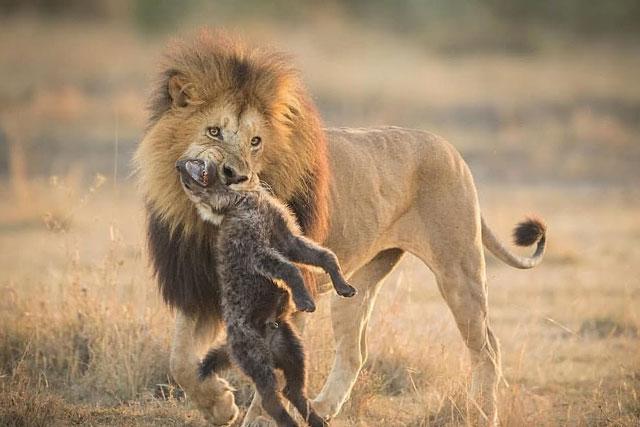In the wild, both lions and hyenas are fearsome predators. With sharp teeth and outstanding hunting abilities, they can hunt and kill many large prey such as hippos, zebras, wildebeests, giraffes, antelopes, and more. Despite being mortal enemies, lions and hyenas sometimes hunt together to increase their chances of success. However, they are also known to fiercely compete for food and territory.
Even if given the opportunity, lions and hyenas are ready to rush into each other to fight or kill opponents. According to scientists, the reason for this is not because they want to compete for resources, but to assert their dominance over each other. Contrary to stereotypes, the reason for this aggression is not because they want to eat each other, but to compete for food.

Because when food becomes scarce, predators often compete for resources by killing their rivals. This can help them expand their territory and ensure they have enough food to survive. However, this behavior can have unintended consequences, such as disrupting the balance of the ecosystem and causing population declines in certain species. It is also important to note that not all predators exhibit this behavior and many species are capable of coexisting peacefully. Understanding the complex dynamics between predators and their prey is crucial for maintaining healthy and sustainable ecosystems.

In addiction to the fights between adults, lions and hyenas are also ready to kill the opponent’s cubs when given the opportunity. However, they rarely eat them, instead choosing to simply eliminate the competition. This behavior is known as infanticide and is not unique to lions and hyenas. Many other species, including primates and rodents, exhibit similar behavior in order to maintain their dominance or expand their territory. Infanticide can have significant impacts on the population dynamics of a species and can lead to long-term effects on the ecosystem.
Source: https://newonlinenews.com/








